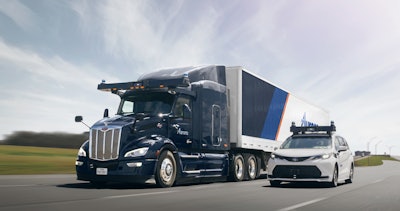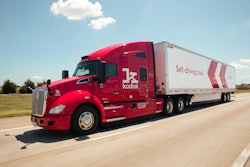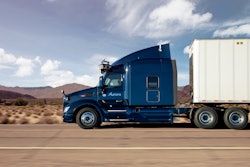
Aurora has launched its Aurora Driver Beta 2.0, the second release of its integrated hardware and autonomy system that powers Aurora’s truck fleet.
The updated platform also features new capabilities and critical improvements to prepare the Aurora Driver for commercial launch, including advanced highway and suburban capabilities, more complex construction zone navigation, key for hauling freight across the country; upgraded cameras with higher resolution, allowing for obstacle detection at twice the distance; and new commercial route between Fort Worth and El Paso supported by daily map updates.
“Aurora Driver Beta 2.0 represents an incremental yet critical milestone in our path to launching an end-to-end autonomous product that can safely move both freight and people,” said Aurora CEO and Co-Founder Chris Urmson. “Whether we’re hauling goods for FedEx or preparing to take passengers to the airport, we’re seeing our technology evolve into a valuable product, and that’s exciting.”
New autonomy capabilities
Aurora Driver Beta 2.0 unlocks the capability to handle more challenging highway and suburban roads, allowing the Aurora Driver to safely and reliably operate on longer commercial routes, including navigating construction zones that require changing lanes and nudging around concrete barriers and/or cones; identifying and reacting naturally to temporary speed limit and lane closure signs, construction workers and vehicles, trucks hauling oversized oil equipment and other unique vehicles and actors commonly present in long-haul trucking; and performing Texas U-turns, a road configuration commonly adjacent to Interstates and an essential maneuver for terminal-to-terminal operation.
Through continued virtual and on-road testing, this release also features matured driving capabilities released in Beta 1.0, such as unprotected left turns, high-speed merges and lane changes.
Higher camera resolution for earlier detection
Aurora Driver Beta 2.0 features upgraded cameras with four-times the amount of pixels. The company said the higher resolution of the Beta 2.0 camera suite gives the Aurora Driver four-times more camera data to ingest, allowing it to see the same level of detail at two-times the distance. Combined with Aurora’s FirstLight lidar and imaging radar, these high-resolution, long-range cameras allow the Aurora Driver to perceive and react to distant objects like road debris, vehicles on the shoulder, construction zones and more, resulting in extremely reliable and safe operation on highways.
New commercial route with enhanced mapping for daily maintenance
Aurora Driver Beta 2.0 includes several advances that enhance its ability to operate on long-haul routes like Fort Worth to El Paso. This lane is the middle leg between Atlanta to Los Angeles – one of the busiest commercial thoroughfares in the U.S. and a route on which the Aurora Driver is delivering commercial freight on a weekly basis.
As Aurora Driver-powered vehicles navigate commercial routes, Aurora’s HD mapping system, the Aurora Atlas, continuously updates to reflect new construction, fresh lane markings, vegetation growth and more. These updates are shared across Aurora’s fleet of trucks and minivans. Now, with stronger tooling and data pipelines, the Aurora Atlas releases updates in hours, giving all vehicles powered by the Aurora Driver up-to-date and reliable information about the state of the road.
One Driver to power Aurora’s cars and trucks
The Aurora Driver 2.0 is the first version that is powering the vehicle platforms that are expected to launch both Aurora Horizon – its trucking product – and Aurora Connect, the company's ride-hailing product. Aurora’s Common Core of Technology enables the intelligence and learnings from its trucks to easily adapt to its minivans.











